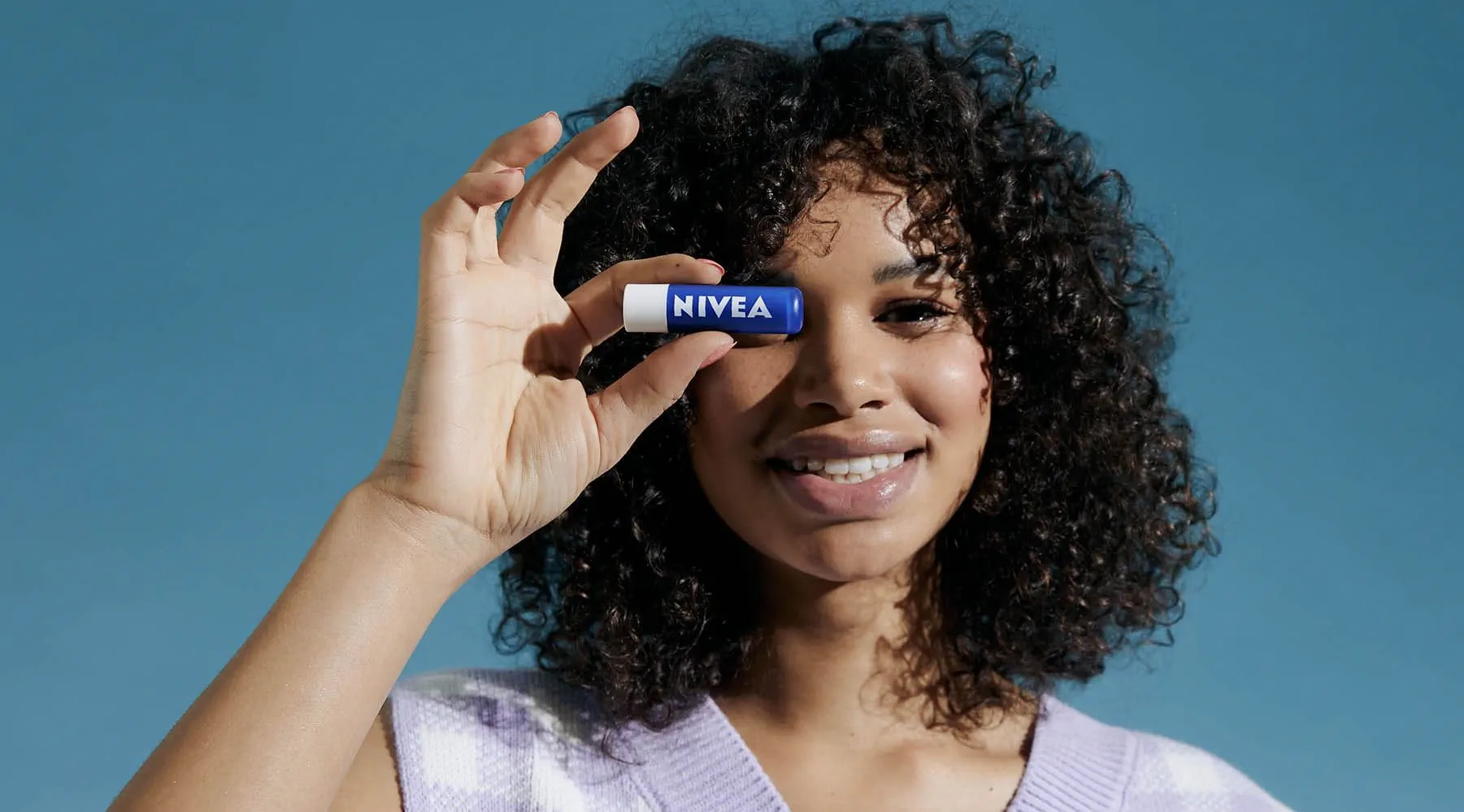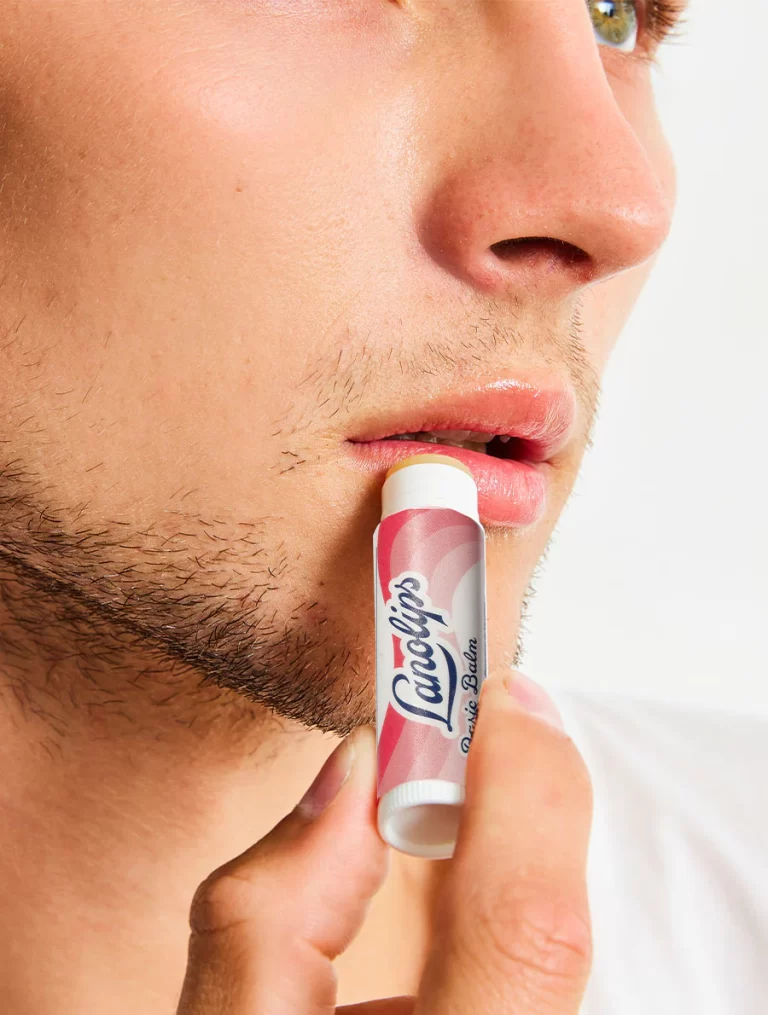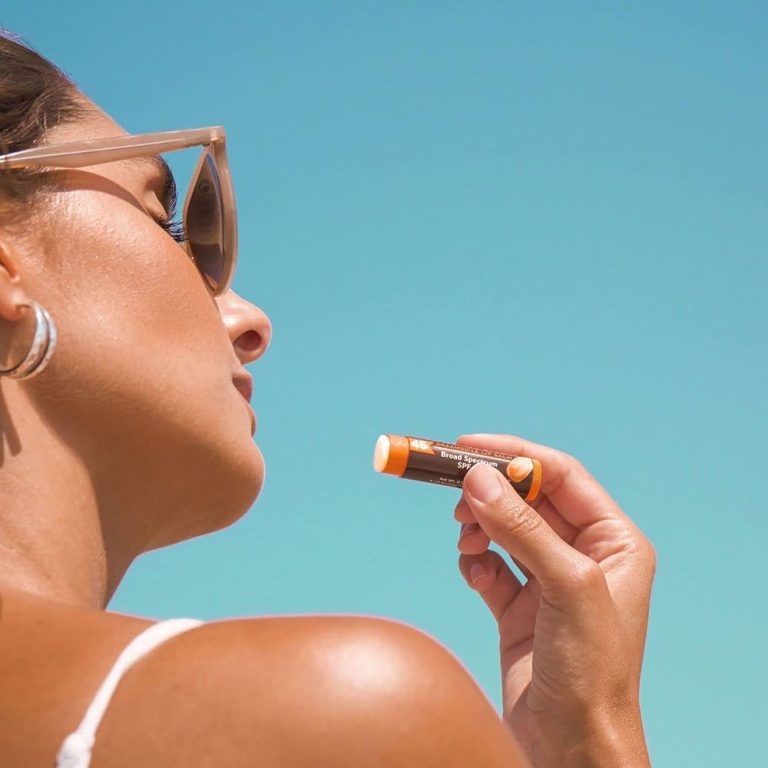
The Essential Guide to SPF Lip Balm
The Essential Guide to SPF Lip Balm: Protecting Your Pout
Lips need protection from harmful UV rays. SPF lip balm offers a solution. It combines moisturizing properties with sun protection. Many overlook lip care in their sun protection routine. This oversight can lead to serious consequences. SPF lip balm plays a crucial role in overall skin health. Understanding its importance can transform lip care habits.
Understanding SPF and Its Importance for Lips
SPF stands for Sun Protection Factor. It measures protection against UVB rays. Higher SPF numbers indicate greater protection. Lips have thin, delicate skin. They lack melanin, the body’s natural sun defense. This makes lips particularly vulnerable to sun damage.
UV exposure can cause lip dryness and chapping. It may lead to more serious conditions like skin cancer. SPF lip balm creates a protective barrier. It shields lips from harmful UV rays. Regular use of SPF lip balm is crucial. It ensures continuous protection throughout the day.
The Benefits of Using SPF Lip Balm Daily
SPF lip balm offers multiple benefits beyond sun protection. It keeps lips moisturized and supple. Hydrated lips are less prone to cracking and peeling. The balm creates a smooth canvas for lipstick application. It prevents premature aging of the lip area.
Fine lines and wrinkles around the mouth reduce. SPF lip balm helps maintain the natural color of lips. It prevents darkening caused by sun exposure. The balm soothes already sun-damaged lips. It aids in the healing process of chapped lips. Regular use contributes to overall lip health. It becomes an essential part of daily skincare routines.
Choosing the Right SPF Lip Balm: Key Factors to Consider
Selecting the ideal SPF lip balm requires consideration. Look for broad-spectrum protection. This guards against both UVA and UVB rays. Choose a minimum SPF of 15 for daily use. Higher SPFs offer more protection for extended sun exposure. Consider the balm’s moisturizing ingredients. Shea butter and vitamin E provide excellent hydration.
Look for water-resistant formulas for beach or pool days. These offer longer-lasting protection. Consider the balm’s texture and finish. Some prefer matte finishes, others like a glossy look. Check for added flavors or scents. Ensure these don’t irritate sensitive lips. Opt for natural ingredients when possible. These reduce the risk of allergic reactions. Consider the packaging for easy application. Stick formats are convenient for on-the-go use.
Top Ingredients to Look for in SPF Lip Balms
Effective SPF lip balms contain key ingredients. Zinc oxide and titanium dioxide offer physical sun protection. They create a barrier on the lips’ surface. Chemical sunscreens like avobenzone provide broad-spectrum protection. Beeswax helps seal in moisture. It creates a protective layer on lips. Coconut oil offers natural sun protection and hydration. Vitamin E acts as an antioxidant. It fights free radicals caused by sun exposure. Aloe vera soothes and heals sun-damaged lips.
Hyaluronic acid provides deep hydration. It helps lips retain moisture throughout the day. Shea butter and cocoa butter offer rich moisturization. They keep lips soft and supple. Green tea extract provides additional antioxidant benefits. It helps protect against environmental damage. Calendula extract soothes irritated lips. It has natural healing properties.
How to Properly Apply and Reapply SPF Lip Balm
Correct application ensures maximum protection. Start with clean, dry lips. Exfoliate gently if needed to remove dead skin. Apply a generous layer of SPF lip balm. Cover the entire lip area, including corners. Extend slightly beyond the lip line for full coverage. Allow the balm to absorb for a few minutes before sun exposure. Reapply every two hours for continued protection.
Apply more frequently when swimming or sweating. Use before applying lipstick or gloss. This creates a protective base layer. Don’t forget to apply on cloudy days. UV rays penetrate clouds and can still cause damage. Keep SPF lip balm easily accessible. This encourages frequent application throughout the day. Apply before bedtime to repair and protect overnight.
Common Myths About SPF Lip Balm Debunked
Misconceptions about SPF lip balm abound. One myth claims SPF in lip products is unnecessary. This is false; lips need sun protection like any skin. Another myth suggests SPF lip balms are only for summer. In reality, lips need year-round sun protection. Some believe applying once daily is sufficient. Regular reapplication is crucial for ongoing protection. A common myth states all lip balms have SPF. Many moisturizing balms lack sun protection.
Some think SPF lip balms are heavy or greasy. Modern formulas are lightweight and comfortable. Another misconception is that darker lips don’t need SPF. All lip colors require sun protection. Some believe SPF lip balms are only for the beach. Daily use in all settings is important for lip health. A myth claims SPF lip balms cause cancer. No scientific evidence supports this claim. Some think natural oils provide enough sun protection. Most natural oils offer minimal SPF, if any.
The Link Between SPF Lip Balm and Skin Cancer Prevention
SPF lip balm plays a crucial role in skin cancer prevention. The lips are highly susceptible to skin cancer. They lack the protective melanin found in other skin. Prolonged sun exposure increases lip cancer risk. SPF lip balm creates a barrier against harmful UV rays. It helps prevent DNA damage in lip cells. Regular use reduces the risk of precancerous changes.
SPF lip balm protects against actinic cheilitis. This condition often precedes lip cancer. The balm prevents the breakdown of collagen in lips. Collagen loss can lead to increased sun sensitivity. SPF lip balm helps maintain the lips’ natural protective barrier. This barrier is crucial for overall lip health. Using SPF lip balm complements other sun protection measures. It’s an essential part of comprehensive skin cancer prevention.
SPF Lip Balm for Different Skin Types and Concerns
SPF lip balms cater to various skin types and concerns. For dry lips, look for balms with added moisturizers. Hyaluronic acid and shea butter provide deep hydration. Sensitive lips benefit from fragrance-free formulas. Mineral-based SPF ingredients are less likely to irritate. Oily skin types should choose non-greasy, matte formulas. These prevent excess shine and slipping. For acne-prone skin, opt for non-comedogenic SPF lip balms.
These won’t clog pores around the lip area. Those with dark lips can find tinted SPF balms. These enhance natural lip color while protecting. Individuals with cold sores should choose balms with healing ingredients. Lysine and lemon balm can help prevent outbreaks. For mature lips, look for anti-aging SPF formulas. These often contain peptides or retinol for added benefits. People with allergies should check ingredients carefully. Hypoallergenic options are available for sensitive individuals.

Comparing SPF Lip Balm to Other Lip Products
SPF lip balm differs from regular lip products. Unlike standard lip balms, it offers sun protection. Regular lip glosses often magnify sun damage. SPF lip balms protect while adding shine. Lipsticks rarely contain adequate sun protection. SPF lip balms can be worn under or over lipstick. Lip oils hydrate but don’t shield from UV rays. SPF lip balms combine hydration with sun protection. Lip scrubs exfoliate but don’t offer UV defense. SPF lip balms should follow lip scrub use.
Lip plumpers focus on volume enhancement. SPF lip balms prioritize protection and health. Lip stains provide long-lasting color. They should be paired with SPF lip balms for protection. Medicated lip products target specific concerns. SPF lip balms offer broader, preventative care. Organic lip products may lack sufficient SPF. Check labels carefully for adequate protection.
SPF Lip Balm for Outdoor Activities and Sports
Outdoor enthusiasts need robust lip protection. High-altitude activities require higher SPF lip balms. The sun’s intensity increases at higher elevations. Water sports demand water-resistant SPF formulas. These withstand swimming and splashing. Winter sports participants need cold-resistant SPF balms. These protect against both sun and wind damage. Runners and cyclists should opt for long-lasting formulas.
Sweat-resistant options maintain protection during exercise. Beachgoers need broad-spectrum, high-SPF lip balms. Sand reflects UV rays, increasing exposure. Hikers and campers benefit from portable stick formulas. These are easy to apply on-the-go. Golfers need SPF lip balms with staying power. Long hours on the course require durable protection. Surfers should choose reef-safe SPF lip balms. These protect lips without harming marine ecosystems. Skiers need balms that combat both sun and cold. Look for formulas with added moisturizers.
The Role of Diet in Supporting Lip Sun Protection
Diet plays a supportive role in lip sun protection. Certain foods boost the body’s natural sun defenses. Tomatoes contain lycopene, which helps fight UV damage. Citrus fruits provide vitamin C for collagen production. Green tea offers potent antioxidants for skin health. Fatty fish supply omega-3s, reducing inflammation. Nuts and seeds provide vitamin E for skin repair. Dark chocolate contains flavonoids that may protect against sun damage.
Leafy greens offer beta-carotene, a natural sun protectant. Berries provide anthocyanins, powerful antioxidants. Pomegranates contain ellagic acid, which may help prevent skin damage. Carrots supply beta-carotene for added sun protection. A balanced diet supports overall skin and lip health. Hydration is crucial for maintaining lip moisture. Water helps flush toxins and supports skin elasticity.
DIY SPF Lip Balm: Pros, Cons, and Recipes
DIY SPF lip balms offer customization options. They allow control over ingredients and scents. However, homemade SPF can be unreliable. Achieving correct SPF levels is challenging. Commercial products undergo rigorous testing. DIY balms lack this quality assurance. Natural ingredients may not provide sufficient protection. Zinc oxide is a common DIY SPF ingredient. It offers broad-spectrum protection when used correctly.
Beeswax and coconut oil form the base of many recipes. Shea butter adds moisturizing properties. Essential oils can provide scent and additional benefits. Carrot seed oil offers natural sun protection. Red raspberry seed oil has a natural SPF of 28-50. Homemade balms may separate or melt easily. Proper storage is crucial for maintaining effectiveness. DIY enthusiasts should research ingredients thoroughly. Consultation with a dermatologist is advisable.

The Future of SPF Lip Balm Technology
SPF lip balm technology continues to evolve. New formulations offer enhanced protection and benefits. Some brands are developing color-changing indicators. These show when reapplication is necessary. Others are incorporating DNA repair enzymes. These help reverse existing sun damage. Smart packaging with UV sensors is on the horizon. It will alert users to high UV levels. Customizable SPF lip balms are becoming available.
They allow users to adjust protection levels as needed. Sustainable packaging options are gaining popularity. They reduce the environmental impact of lip care products. Nano-technology in SPF formulas improves absorption. This ensures more effective protection. Plant-based SPF alternatives are being researched. These may offer natural, eco-friendly protection. Multifunctional SPF lip balms are emerging. They combine sun protection with anti-aging benefits. Probiotic-infused SPF balms support lip microbiome health. These innovations promise improved sun protection for lips.
Expert Tips for Year-Round Lip Sun Protection
Dermatologists offer valuable advice for lip sun protection. Apply SPF lip balm 15-30 minutes before sun exposure. This allows the product to absorb properly. Reapply every two hours, or more if eating or drinking. Don’t neglect lips during winter months. Snow reflection can intensify UV exposure. Use a higher SPF for high-altitude or tropical locations. The sun’s intensity increases in these settings. Combine SPF lip balm with other sun protection measures.
Wide-brimmed hats provide additional lip shade. Avoid licking lips, which removes protective layers. Stay hydrated to maintain lip moisture from within. Exfoliate lips gently once a week. This removes dead skin and improves product absorption. Consider using an overnight lip mask with SPF. It provides protection and repair while sleeping. Be cautious with lip glosses in sunny conditions. They can intensify UV rays on lips.
Conclusion: Embracing SPF Lip Balm for Healthy, Protected Lips
SPF lip balm is essential for comprehensive sun protection. It safeguards delicate lip skin from UV damage. Regular use prevents premature aging and reduces cancer risk. Choosing the right SPF lip balm involves considering various factors. Ingredients, SPF level, and personal needs all play a role. Proper application and reapplication are crucial for effectiveness.
SPF lip balm complements a healthy diet and lifestyle. It’s an integral part of overall skin care routines. As technology advances, SPF lip balms continue to improve. They offer more benefits and easier application. Year-round use of SPF lip balm is recommended by experts. It ensures continuous protection in all seasons and settings. By incorporating SPF lip balm into daily routines, individuals can maintain healthy, protected lips. This simple step contributes significantly to long-term lip and skin health.



